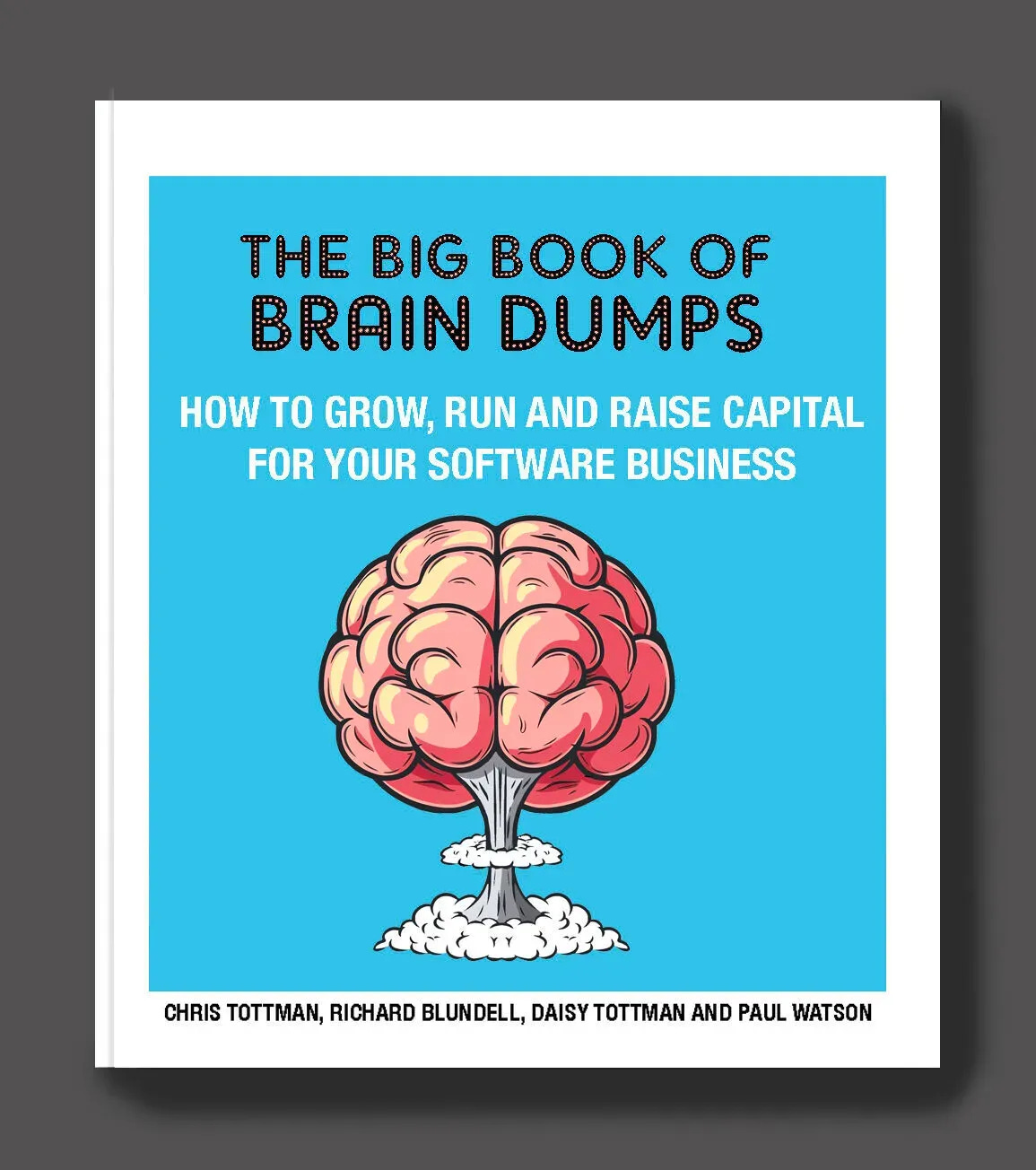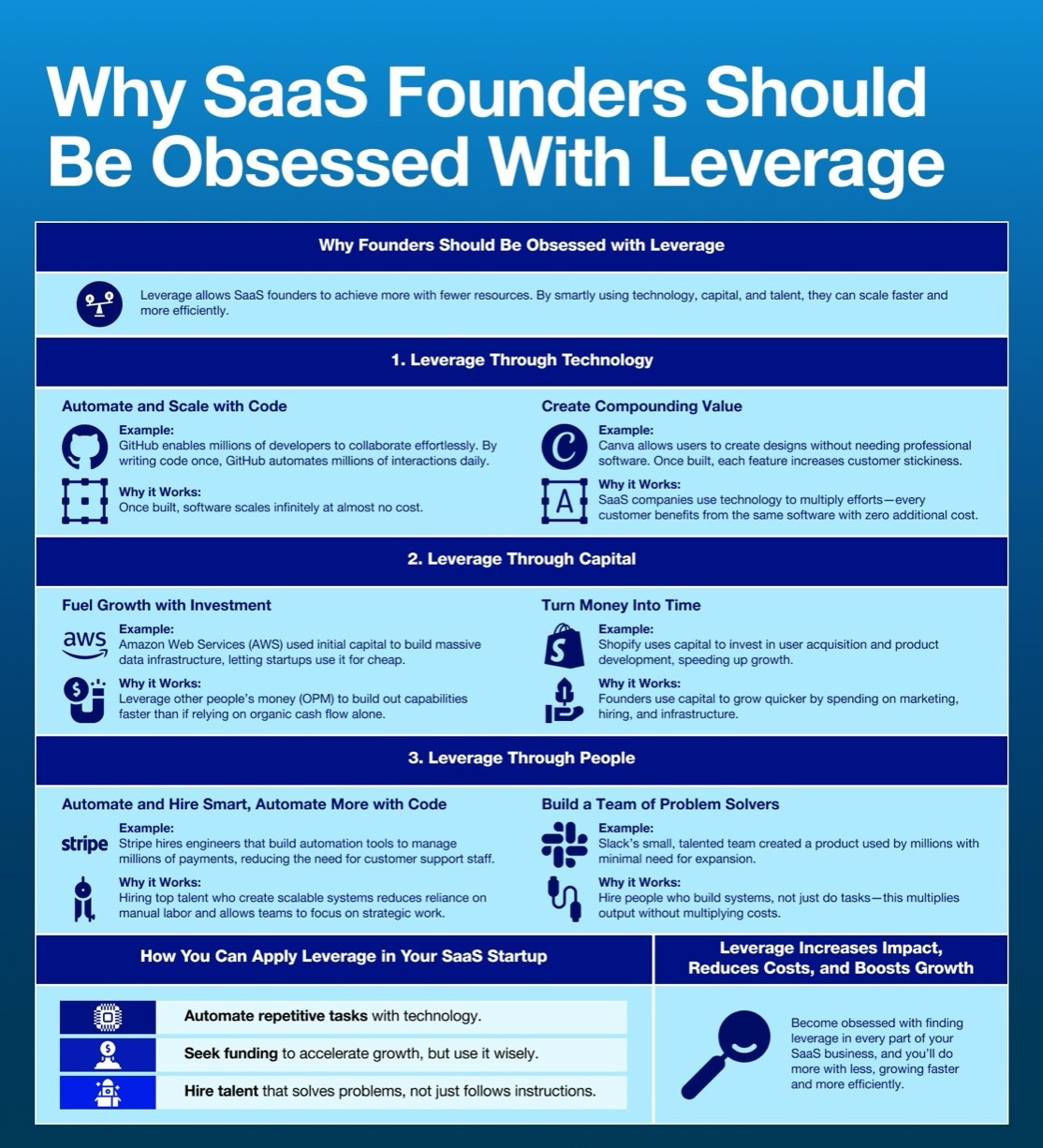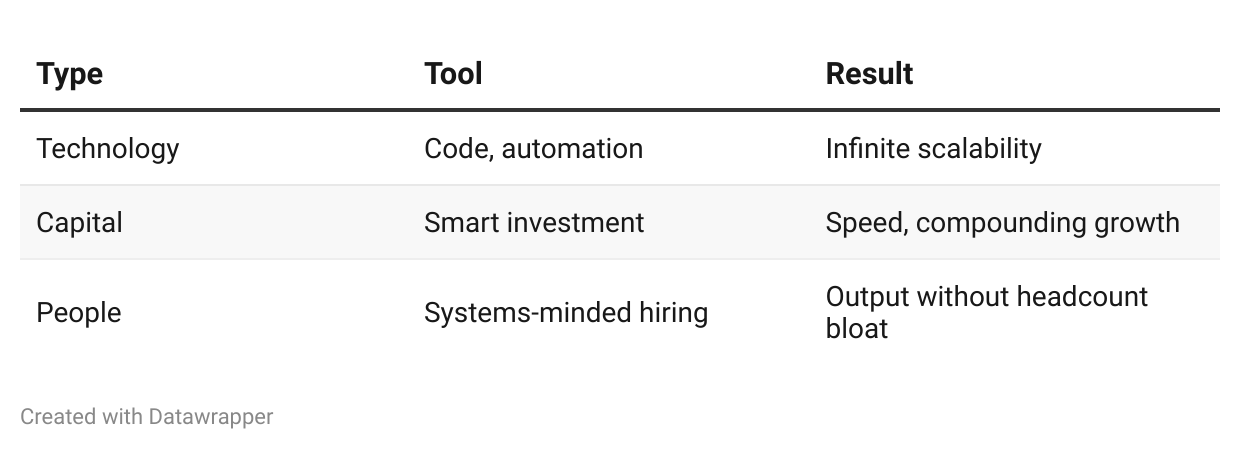🚀 The 3 Plays That Built Companies Like Stripe, Shopify, and GitHub
Why increasing headcount might kill your startup—and how leverage can be the remedy.
👋 Hey, Chris here! Welcome to BrainDumps—a weekly series from The Founders Corner. If you’ve been reading along, you know this series is a preview of a bigger project. Well, it’s finally here: The Big Book of BrainDumps is out now!
It isn’t a theory book—it’s the founder’s field manual. Inside, you’ll find 70 powerful frameworks distilled from 30+ years scaling software companies to hundreds of millions in ARR, 20+ years investing in 500+ B2B tech startups, and over $1B of shareholder value created. From raising capital to hiring your first VP of Sales, this book turns scars and successes into practical playbooks you’ll return to again and again. I expect most copies will become well-worn, scribbled on, and dog-eared—because it works.
The Force Multiplier You Might Be Overlooking
When I think back over my 25 years working with software businesses—first as a founder, then as an investor—there’s one mental model I wish I’d learned earlier.
It’s not blitz scaling.
It’s not burn rate management.
It’s leverage.
Put simply, leverage is how you get outsized returns from finite effort. It’s how founders achieve more with less. It’s the tool that lets tiny startups punch above their weight and win.
And yet, I see far too many founders trying to scale manually—working harder, hiring faster, burning more cash—instead of obsessing over how to multiply impact.
Leverage is how you build something exponential from something small. And it comes in three powerful forms:
Technology
Capital
People
Let me break each down, with stories from the trenches—mine and others.
1. Leverage Through Technology
Automate once. Scale infinitely.
In the early 2000s, when I launched one of my first B2B SaaS ventures, we had a painfully manual customer support process. Every new onboarding involved spreadsheets, calls, and duplicated work. We thought we were doing the smart thing by "staying close to the customer."
What we were really doing was repeating work instead of codifying it.
Eventually, we built a basic onboarding tool that automated 80% of what the team was doing manually. Within weeks, churn dropped and NPS climbed. But the biggest shift? We freed up four people to focus on upsell, product feedback, and advocacy.
That’s leverage.
Great software is written once, then scales forever.
Take GitHub. One developer solves a problem and commits code. That solution can now be used by millions. The effort is fixed. The return is infinite.
Same with Canva. Every new drag-and-drop tool they add compounds user value—because it saves time and increases stickiness. One build, many beneficiaries.
Leverage through technology is the fundamental engine of modern SaaS.
It’s how you outgrow your competitors without outspending them.
2. Leverage Through Capital
Buy time. Accelerate outcomes.
Here’s a hard truth I’ve learned both as a founder and as an investor:
Time is your most expensive cost. Capital lets you buy it back.
I once advised a brilliant solo founder who had nailed his prototype and found early traction. But he was bootstrapping every inch. He refused outside capital. He said he didn’t want dilution.
Six months later, a better-funded competitor launched, hired a proper GTM team, and swept the market.
Was the bootstrapping mindset wrong? No. But it cost him momentum—and in software, momentum is everything.
Look at Shopify.
They turned early capital into product speed and market entry.
Look at AWS.
Amazon didn’t organically “grow” its cloud dominance—they funded the infrastructure to leap ahead.
Good capital isn’t just a bank transfer. It’s acceleration—the fuel that lets you skip slow iterations and reach escape velocity before your window closes.
3. Leverage Through People
Don’t just hire. Multiply.
Hiring is not about headcount.
It’s about output per hire.
I see too many SaaS teams treat hiring like replication:
“We’re busy—let’s add more bodies.”
But the most impactful teams I’ve ever worked with? They didn’t grow by adding people. They grew by hiring problem solvers who built systems.
Stripe nailed this.
They didn’t scale support teams endlessly—they automated support workflows.
They hired engineers who removed 100 tasks from ops by writing 10 lines of code.
Slack did it too.
Small team. Big impact. Everyone was product-obsessed, systems-minded, and focused on leverage from day one.
In one of my earlier ventures, we made the classic mistake: hire fast, hope things get done faster. But all we got was more coordination overhead and fewer breakthroughs.
Once we reset and focused on hiring operators who thought like engineers—process-driven, product-aware—we doubled productivity with half the team.
Lesson: Hire thinkers, not just doers. Hire builders, not just managers. Hire for leverage, not scale.
How Founders Can Apply Leverage Right Now
You don’t need a Series A war chest or a 50-person dev team to use leverage.
You just need focus.
Here’s your early-stage playbook:
1. Automate Repetitive Tasks
Anything you’ve done more than twice?
Turn it into a template, a zap, or a line of code.
Use onboarding scripts
Product usage triggers
Email automations
Stripe or HubSpot integrations
Shared FAQs or Loom videos for support
This isn’t laziness. It’s velocity creation.
2. Raise Capital Strategically
Capital gives you options—but only if you use it wisely.
If you’re bootstrapping, reinvest profits where they produce compounding growth: onboarding, content, product-led growth.
If you’re raising, don’t just chase a valuation. Chase speed. Invest capital in:
Faster customer feedback loops
Shortening sales cycles
Experimentation
Marketing infrastructure
Game-changing hires
Money isn’t leverage until you apply it where time and learning matters.
3. Hire for Systems Thinking
Resist the urge to hire for coverage.
Hire for capability. Ask:
“Will this person remove 10 hours of complexity for the team—or add it?”
Your first 10 hires should:
Build repeatable systems
Automate their own tasks
Document what they create
Think like owners
At Notion Capital, some of our best portfolio companies were led by lean teams who punched 10x above their weight—not because they worked more, but because they worked with leverage.
A Personal Mistake (and What It Taught Me)
In one of my early businesses, we had just closed a solid funding round. We felt invincible. We grew from 12 to 45 people in under six months. But instead of focusing on leverage, we focused on volume.
More salespeople. More support reps. More project managers.
The result?
Decision-making slowed.
Culture got foggy.
Costs ballooned.
And ironically—we moved slower.
Eventually, we scaled back to a core team of 20, invested in tooling, automated our lead gen, and restructured support to self-service.
That quarter, we hit our best revenue run rate ever.
Not because we had more—but because we had leverage.
Founders Win on Leverage, Not Headcount
Want to grow sustainably? Don’t chase scale.
Chase efficiency multiplied by power.
Let’s summarise:
The best founders I know are leverage junkies.
They look at every process and ask:
“How can we 10x this with the same effort?”
They scale without chaos. Grow without stress.
And build businesses that actually make money—not just noise.
Final Word: Work Smart, Multiply Hard
You will always have constraints—time, talent, capital, energy.
The question is:
“How do you turn those constraints into advantages?”
Leverage isn’t a tactic. It’s a worldview.
Obsess over it.
Write once. Use often.
Spend wisely. Move quickly.
Hire once. Scale impact.
This is the mindset that built GitHub, Stripe, Shopify, and Canva.
It’s also the mindset that will help you win—not just next quarter, but long-term.
Leverage builds companies.
It also protects them.
Make it your edge.
—Chris Tottman





“How can we 10x this with the same effort?”
A prerequisite question should be: Should we? Should we have 10x of this in the first place (given that we could)?
One very common mistake is to want 10x more features. Surprisingly often, people act as if they believed this would give them an edge.
In reality, they'd build an abomination that wouldn't resemble the original product/offering they envisioned. What's more, whatever value the product would still provide will be buried under a ton of bloat. That, in turn, will create a whole new market for more niche solutions that do one thing but do it well.
The same is true if we look at business as a whole.
Shopify's early days might have been built on leveraging the team's capabilities. Later? It was anything but. In Lutke's infamous farewell message to hundreds of laid-off people, he mentioned "eliminating over-specialized and duplicate roles as well as some groups that were convenient to have but too far removed from building products" (https://www.cbsnews.com/news/shopify-layoffs-10-percent-workforce-ecommerce-retail/).
BTW: go figure what the feelings of engineers were who learned they were just "convenient to have."
But the point remains. They hired all these people because they could. They were building "non-core" products/services because they could. Did it give them any additional value? Nope.
It's the same story with so many early-stage products (which is my world). They want all the features. Interestingly, with AI it's getting easier to give them a bigger chunk of what they want, but that's another story.
However, if they could get 10x as many features, it wouldn't make their products better. It would make them worse.
Leverage does make sense when you set it up in the right spot. Most spots aren't right.